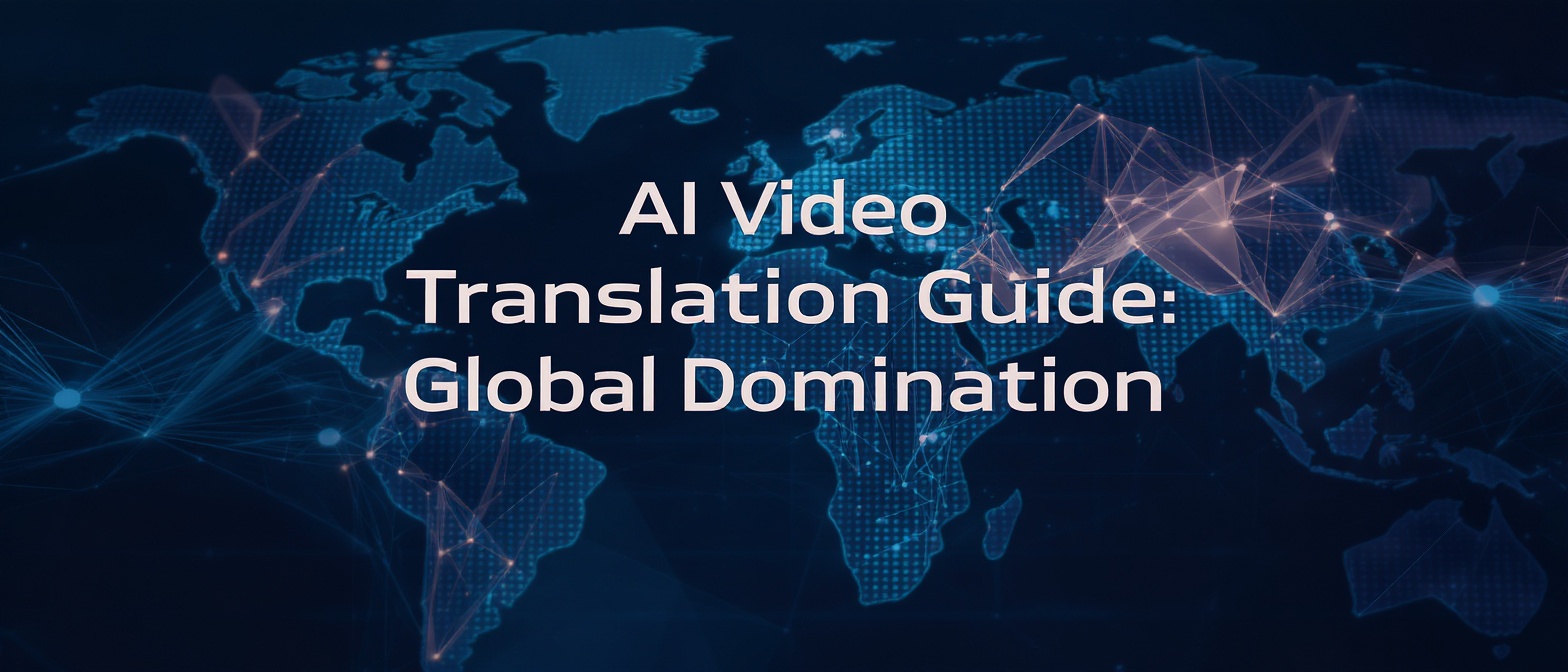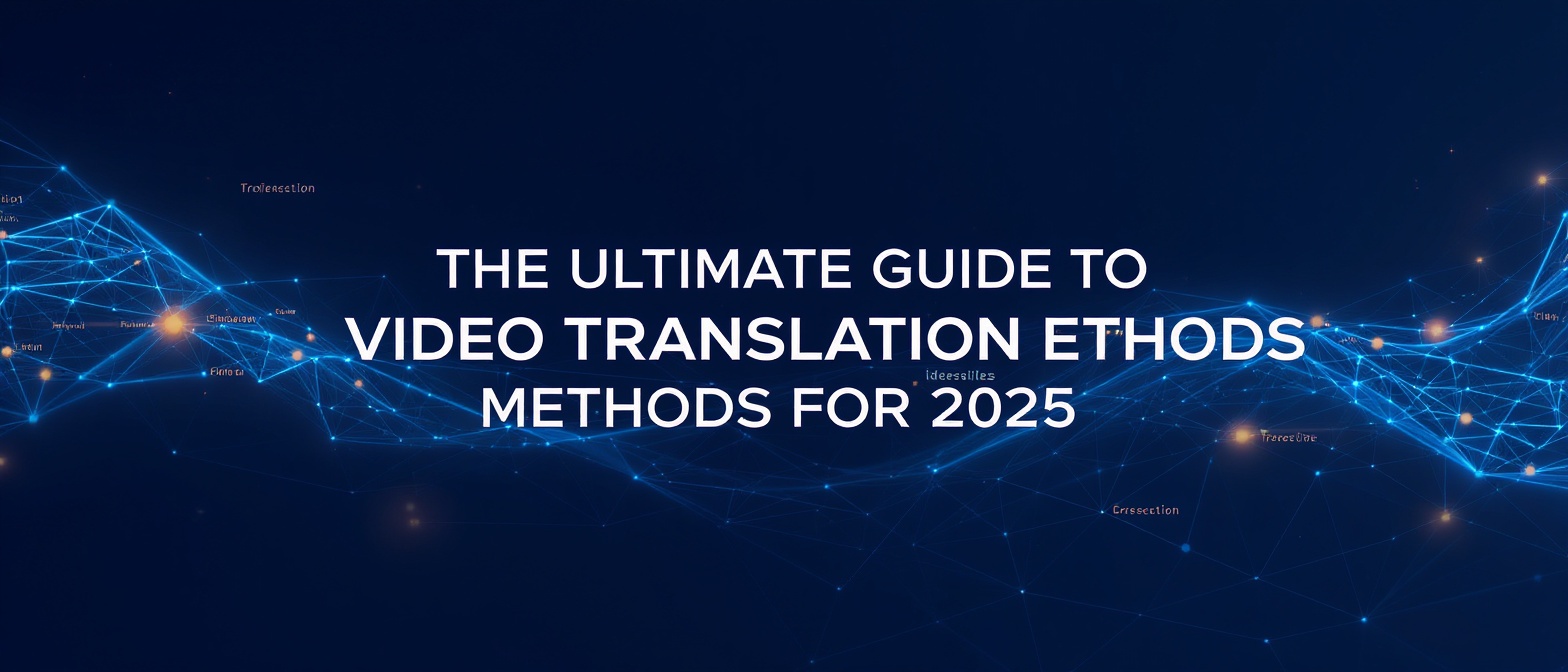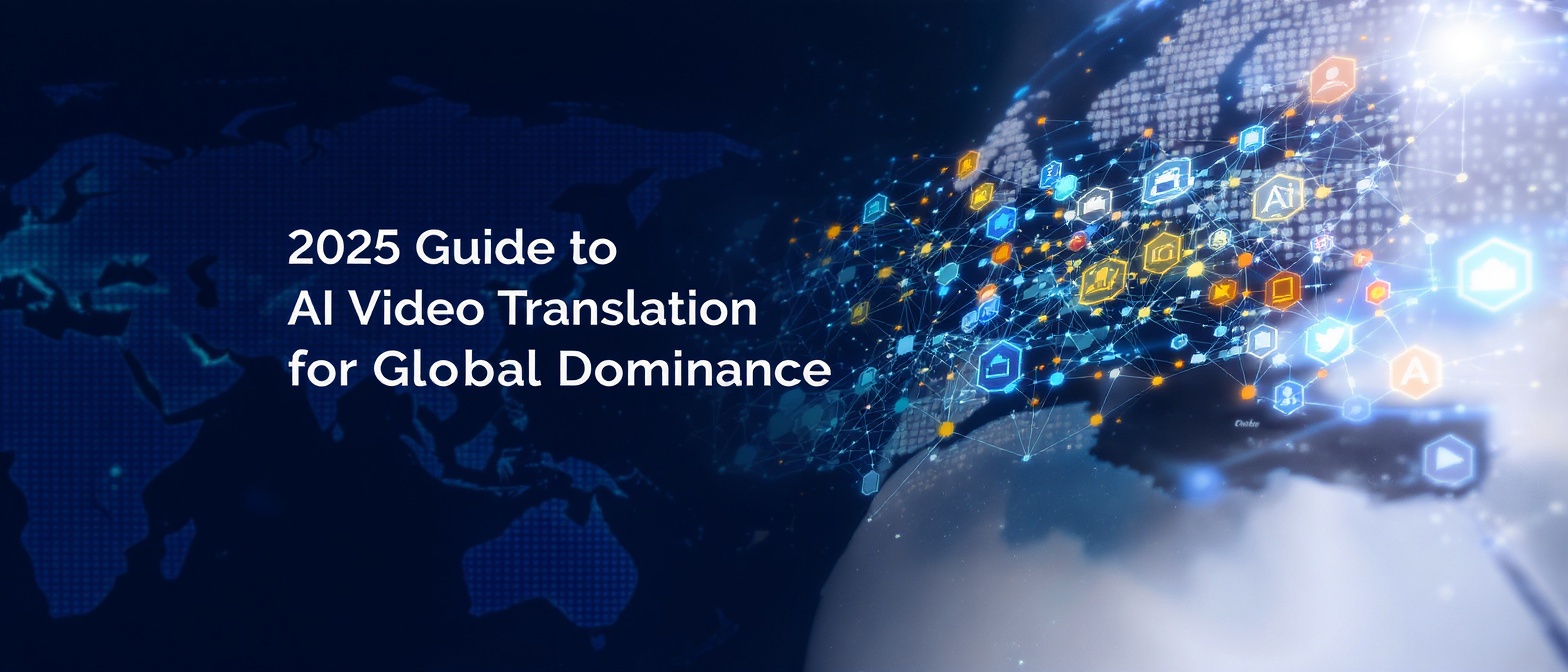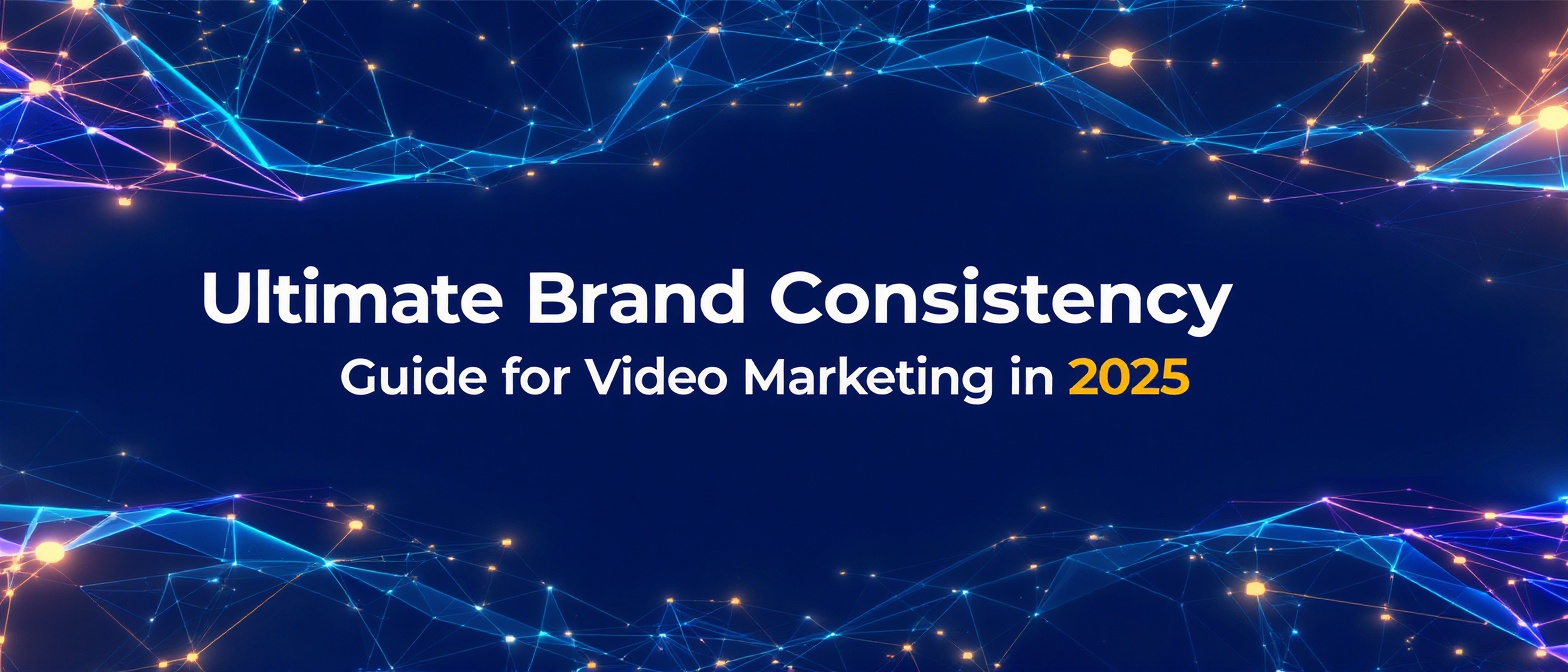The Ultimate Guide to AI Video Translation: Go Global & Dominate Markets in 2025
Estimated reading time: ~12 minutes
Key Takeaways
- By 2025, video content will be the biggest global communication channel.
- AI translation and localization strategies are essential for reaching new markets.
- Understanding cultural nuances goes beyond just swapping words.
- Accurate ROI tracking ensures you measure global expansion success.
In the sprawling digital landscape of 2025, video isn't just king; it's the global emperor. But what happens when your message, perfectly crafted for one audience, hits a language barrier? It stops. Dead in its tracks. This is the critical challenge businesses, educators, and creators face today. The solution is no longer a costly, time-consuming manual process. The future is here, and it’s powered by AI video translation.
If you're looking to shatter geographical boundaries and connect with a truly global audience, you're in the right place. This guide goes beyond a simple “how-to.” We'll explore the strategy, the technology, and the nuanced execution required to not just translate your videos, but to make them resonate culturally in every corner of the world. Forget simply swapping words; we're talking about winning hearts and minds in any language, on any screen.
Part 1: Why Video Localization is a Non-Negotiable Growth Strategy for 2025
The debate is over. Operating in a single language means willingly ignoring a massive segment of the global market. The data paints a stark picture of opportunity for those willing to adapt.
The global video translation market is exploding. Projections for 2025 indicate a market size surging past $5 billion, driven by the insatiable demand for localized digital content. This isn't just a trend; it's a fundamental shift in how consumers interact with brands.
Consider these powerful statistics that frame the urgency:
- Overwhelming Consumer Preference: A 2025 study by CSA Research found that 76% of online shoppers prefer to buy products with information in their native language. Furthermore, 40% will never buy from websites in other languages.
- Engagement Skyrockets: According to a Forrester report, localized video content can increase viewer engagement by up to 150%. Viewers don't just watch; they connect, comment, and share when the content speaks their language.
- The SEO Advantage: Translating your video metadata—titles, descriptions, and tags—can dramatically improve your content's discoverability. A report from Google itself highlights that localizing your content can lead to a significant increase in organic search traffic from international markets.
- E-Learning Goes Global: The global e-learning market is expected to reach $457.8 billion by 2026. For educational institutions and corporate trainers, video localization is the key to unlocking a worldwide student base.
- Social Media Impact: A 2025 analysis of social media trends revealed that localized video ads have a 2.5x higher click-through rate (CTR) than their English-only counterparts in non-English speaking regions.
The message is clear: a monolingual video strategy is a strategy for stagnation. To grow, you must go global, and the bridge to global markets is built with expertly localized video.
Part 2: The Core Concepts: Translation vs. Localization vs. Transcreation
Before diving into the technology, it's crucial to understand the strategic distinctions between three key terms. Confusing them can lead to content that is linguistically correct but culturally tone-deaf.
Translation: The Literal Foundation
Goal: Linguistic accuracy.
Example: Changing "Hello, how are you?" in English to "Hola, ¿cómo estás?" in Spanish.
Limitation: It doesn't account for cultural context, idioms, or slang. A direct translation can often sound robotic or, worse, nonsensical.
Localization (L10n): Adapting for Culture
Goal: Cultural relevance and functional usability.
Process: This involves changing currencies, units of measurement, date formats, and even colors or imagery that might be inappropriate or confusing in the target culture.
Example: An American ad showing a football game would be changed to show a soccer match for a European audience. The core message is the same, but the context is localized.
Transcreation: Recreating for Impact
Goal: Eliciting the same emotional response.
Process: The original content serves as a creative brief. The transcreation team might write entirely new copy or create new visuals to achieve the same marketing objective.
Example: The “Got Milk?” campaign was famously difficult to translate. In Mexico, it was transcreated to “Y tú, ¿les das suficiente leche?”, which resonated better with the cultural emphasis on family and maternal care.
For most business, educational, and creator content, localization is the gold standard. It ensures your video is not only understood but also culturally appropriate and engaging.
Part 3: The Technology Powering the Revolution: How AI Video Translation Works
The magic behind modern video localization is a suite of sophisticated AI technologies working in concert. This isn't just about machine translation anymore; it's a holistic recreation of the viewing experience. Studio by TrueFan AI enables creators and businesses to harness this power without needing a team of linguists or sound engineers.
Here’s a look under the hood:
- Automated Speech Recognition (ASR): AI models listen to the audio track and convert the spoken words into a time-stamped text file. The accuracy of modern ASR, especially models trained on vast datasets, now exceeds 95% for many languages.
- Neural Machine Translation (NMT): Forget the clunky, literal translations of the past. NMT models analyze the entire sentence's context to produce much more fluent and accurate translations.
- AI Voice Cloning & Text-to-Speech (TTS): Advanced AI can analyze a speaker's unique vocal characteristics and create a synthetic version of their voice that can speak any language. When combined with TTS, the translated script is spoken in a voice that is remarkably similar to the original speaker's.
- AI Lip-Sync: Generative AI algorithms analyze the original speaker's mouth movements and the phonemes of the newly translated audio. They then subtly alter the video frames to make the speaker's lips move in perfect sync with the new language.
Together, these technologies create a seamless, authentic viewing experience that was once the exclusive domain of multi-million dollar movie studios.
Part 4: The 7-Step Strategic Framework for Flawless Video Localization
The competitor's five steps are a good start, but a truly superior strategy is more comprehensive. Follow this 7-step framework to ensure your video localization project is a success from start to finish.
Step 1: Strategic Market & Audience Analysis
Before you translate a single word, ask: Who are we trying to reach, and why?
- Identify Priority Markets: Use analytics to see where your content is already gaining traction. Look for regions with high market potential but low language penetration.
- Develop Audience Personas: Understand the cultural values, online behaviors, and content preferences of your target audience in that market.
Step 2: Content Selection & Cultural Audit
- Choose High-Impact Videos: Start with your best-performing content: product demos, flagship tutorials, or viral marketing videos.
- Conduct a Cultural Audit: Review the selected video for any visuals or references that could be misinterpreted in the target culture.
Step 3: AI-Powered Transcription & Refinement
- Use a Quality ASR Tool: Generate the initial time-stamped transcript.
- Human Review: Have a native speaker refine the transcript to correct any errors.
Step 4: Contextual AI Translation with Human Post-Editing (MTPE)
- Leverage NMT: Use a powerful Neural Machine Translation engine for a high-quality draft translation.
- Implement MTPE: A professional linguist polishes the AI output for cultural nuance and brand voice.
Step 5: Advanced AI Dubbing, Voice Cloning & Subtitling
- Choose Your Audio Method: Either AI dubbing or AI voice cloning for a more personal touch.
- Generate Subtitles: Always provide subtitles for accessibility.
Step 6: Lip-Sync & Video Re-rendering
- Run the Lip-Sync Algorithm: Ensure the speaker’s mouth matches the new language track.
- Re-render the Video: Compile the localized audio and updated visuals into a finished file.
Step 7: Final Quality Assurance (QA) & Distribution
- Native Speaker Review: Have a native speaker do a final watch-through.
- Optimize for Distribution: Upload the localized video to relevant platforms with translated metadata.
Part 5: Beyond Language: Mastering Cultural Nuances for True Connection
Simply translating the language is only half the battle. True localization means adapting the entire experience. This is what separates content that is merely understood from content that is truly felt.
- Visuals and Imagery: Audit for gestures, symbols, or colors that might carry different meanings in the target culture.
- Humor, Slang, and Idioms: These rarely translate directly. Collaborate with a native linguist to find culturally equivalent expressions.
- Pacing and Formality: Different cultures have different expectations for presentation speed and style. Studio by TrueFan AI’s 175+ language support and AI avatars can help you adapt without re-recording.
- Data and Examples: Swap out region-specific facts for those that resonate locally.
Part 6: Measuring the ROI of Your Global Video Strategy
Investing in video localization requires a clear understanding of its return. While it can seem complex, you can track the ROI of your efforts by focusing on a few key metrics.
ROI = (Financial Gain from Investment - Cost of Investment) / Cost of Investment
Here’s how to quantify the variables:
- Cost of Investment: Sum the costs of AI software subscriptions, linguists or QA reviewers, and team hours.
- Financial Gain: Increase in revenue from new markets, higher customer lifetime value, and improved engagement metrics.
Solutions like Studio by TrueFan AI demonstrate ROI through significant cost and time savings. A process that once took weeks and thousands of dollars can now be completed in hours for a fraction of the cost. For a deeper dive, check out this in-depth guide to calculating marketing ROI from HubSpot.
Part 7: The Future of Video Localization: What to Expect by 2030
The technology is advancing at a breathtaking pace. Here are three trends that will shape the future of global video communication:
- Real-Time Translation: Expect live streams and video calls dubbed into your native language instantly, with lip-sync.
- Hyper-Personalization: AI will adapt content to specific dialects, slang, and personal preferences for a one-to-one experience.
- Immersive XR Experiences: In AR/VR environments, AI will translate dialogue, on-screen text, and cultural cues in real time. MIT Technology Review provides excellent analysis.
Frequently Asked Questions
1. How much does AI video translation typically cost?
The cost has dropped dramatically. Instead of thousands of dollars per video for agency work, AI platforms typically use a subscription or per-minute pricing model, often ranging from a few dollars to around $20 per minute of video.
2. Is AI translation accurate enough to use for professional content?
Yes, when used within a “human-in-the-loop” workflow. AI handles most of the heavy lifting, and a professional linguist refines the final output for cultural nuance.
3. What is the difference between open-ear and closed-ear dubbing?
“Open-ear” dubbing leaves the original audio faintly in the background, while “closed-ear” dubbing fully replaces it. Modern AI tools excel at closed-ear dubbing, giving a more immersive experience.
4. How do I handle on-screen text and graphics?
On-screen text must also be localized. You’ll need to edit or replace original text with translations. Some advanced AI platforms automate this process, but a manual check is still crucial.
5. What are the legal and ethical considerations of using AI voice cloning?
You must have explicit consent from the original speaker to clone and use their voice. Regulations vary by jurisdiction. Consult resources like the Electronic Frontier Foundation (EFF) for more info.
6. Can AI handle different dialects within the same language?
Yes, newer models can synthesize multiple dialects, such as Castilian Spanish vs. Latin American Spanish. Many platforms, including Studio by TrueFan AI, offer these dialectical options.
7. How can I ensure data privacy when uploading my videos to an AI platform?
Reputable providers use secure, encrypted connections and comply with regulations like GDPR and CCPA. Always review the platform's privacy policy to understand how your content is stored and used.
Conclusion: Speak to the World, One Viewer at a Time
The digital world has no borders, and thanks to AI, neither does your video content. Moving beyond simple translation to embrace a full localization strategy is the single most powerful step you can take to unlock explosive international growth.
By understanding the technology, adopting a strategic framework, and paying close attention to cultural nuance, you can transform your videos from monolingual messages into a global conversation. The tools are more accessible, affordable, and powerful than ever before. The only question left is: Which market will you connect with first?




